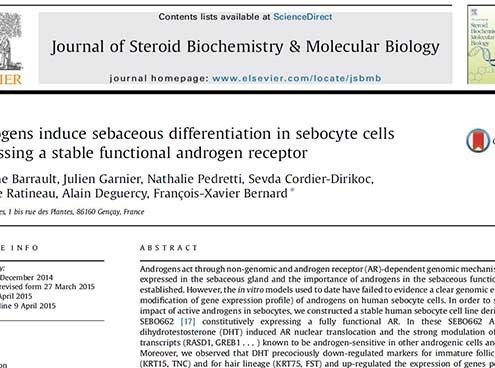
Androgens induce sebaceous differentiation in sebocyte cells expressing a stable functional androgen receptor
Ingénierie cellulaire et tissulaire, Vieillissement cutanéIn order to study the impact of active androgens in sebocytes, we constructed a stable human sebocyte cell line derived from SEBO662 [17] constitutively expressing a fully functional AR. In these SEBO662 AR+ cells, dihydrotestosterone (DHT) induced AR nuclear translocation and the strong modulation of a set of transcripts (RASD1, GREB1...) known to be androgen-sensitive in other androgenic cells and tissues.
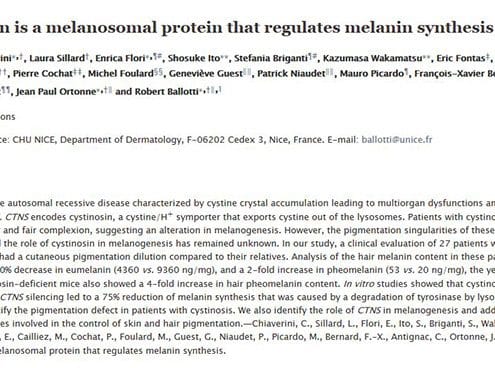
Cystinosin is a melanosomal protein that regulates melanin synthesis
Pigmentation, PigmentationIn vitro studies showed that cystinosin was located at melanosomes. CTNS silencing led to a 75% reduction of melanin synthesis that was caused by a degradation of tyrosinase by lysosomal proteases. Our results objectify the pigmentation defect in patients with cystinosis. We also identify the role of CTNS in melanogenesis and add a new gene to the list of the genes involved in the control of skin and hair pigmentation.
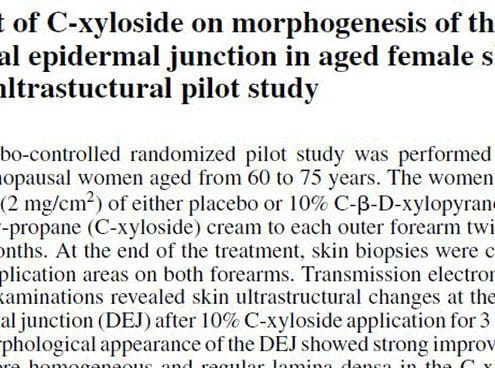
Effect of C-xyloside on morphogenesis of the dermal epidermal junction in aged female skin. An ultrastuctural pilot study
Cosmetique, Cosmétique, Skin ageing, Vieillissement cutanéThese data suggest that topical C-xyloside application in vivo may be efficient in inducing a better dermal-epidermal cohesion when such a junction is deficient, as is the case in photo-aged or chronologically aged skin. Moreover, a statistically significant increase in CD44 expression was noted in the epidermis of C-xyloside-treated compared to the placebo treated skin areas.
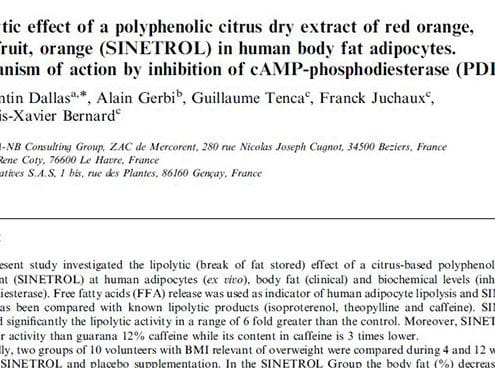
Lipolytic effect of a polyphenolic citrus dry extract of red orange, grapefruit, orange (Sinetrol) in human body fat adipocytes. Mechanism of action by inhibition of cAMP-Phosphodiesterase (PDE)
Cosmetique, CosmétiqueThe present study investigated the lipolytic (break of fat stored) effect of a citrus-based polyphenolic dietary supplement (SINETROL) at human adipocytes (ex vivo), body fat (clinical) and biochemical levels (inhibition of phosphodiesterase).
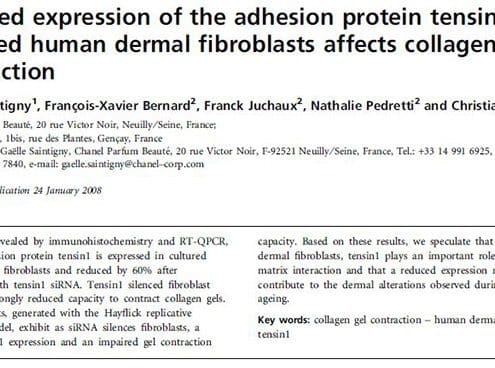
Reduced expression of the adhesion protein tensin1 in cultured human dermal fibroblasts affects collagen gel contraction
Cosmetique, Cosmétique, Skin ageing, Vieillissement cutanétensin1 plays an important role in cell-matrix interaction and that a reduced expression might contribute to the dermal alterations observed during skin ageing
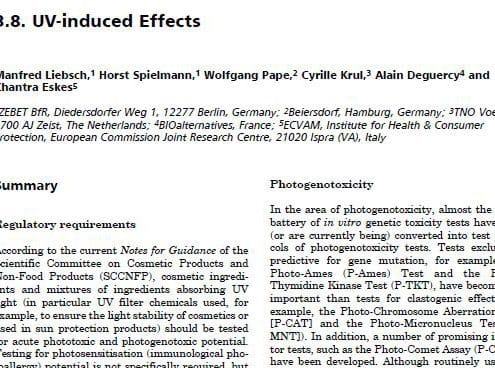
Alternative (non-animal) methods for cosmetic testing: current status and future prospects – UV-induced effects
Cosmetique, Cosmétique, Protection et défenses cutanées, Safety and toleranceCosmetic ingredients and mixtures of ingredients absorbing UV light (in particular UV filter chemicals used, for example, to ensure the light stability of cosmetics or used in sun protection products) should be tested for acute phototoxic and photogenotoxic potential.
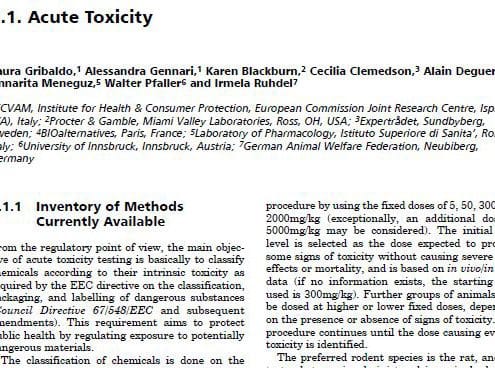
Alternative (non-animal) methods for cosmetic testing: current status and future prospects – Acute toxicity
Cosmetique, Cosmétique, Protection et défenses cutanées, Safety and toleranceFrom the regulatory point of view, the main objective of acute toxicity testing is basically to classify chemicals according to their intrinsic toxicity
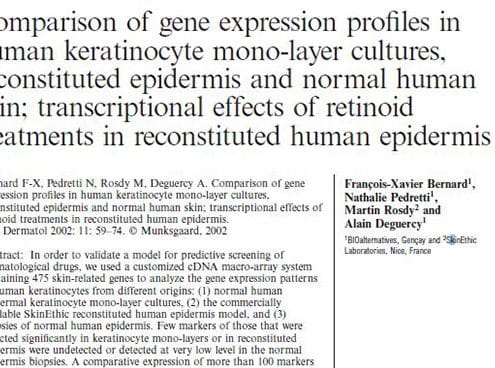
Comparison of gene expression profiles in human keratinocyte mono-layer cultures, reconstituted epidermis and normal human skin; transcriptional effects of retinoid treatments in reconstituted human epidermis
Cosmetique, Cosmétique, Epidermal regeneration, Régénération épidermiqueIn order to validate a model for predictive screening of dermatological drugs, we used a customized cDNA macro-array system containing 475 skin-related genes to analyze the gene expression patterns in human keratinocytes from different origins.
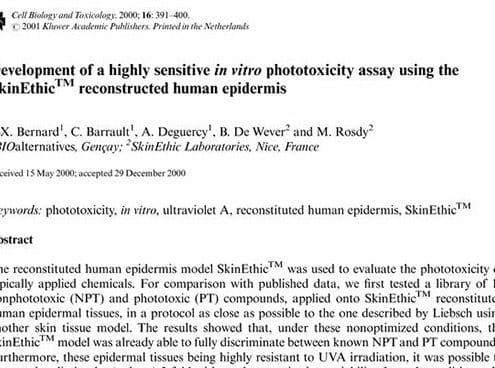
Development of a highly sensitive in vitro phototoxicity assay using the SkinEthic reconstructed human epidermis
Protection et défenses cutanées, Safety and toleranceThe reconstituted human epidermis model SkinEthic was used to evaluate the phototoxicity of topically applied chemicals.



